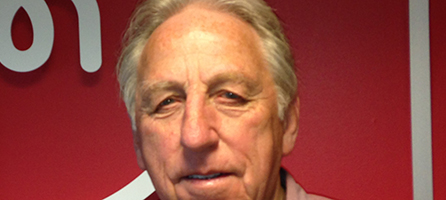
If we continue to consume energy at the rate we do now, consequences could include a shortfall in available energy
As LEDs become brighter and more efficient, I believe the next step in their evolution centres on smarter control. LED efficiency is compromised by poor control and despite available technologies a vast amount of energy is being wasted due to a lack of planning and in some instances a lack of knowledge around options for LED management. Speakers at the ‘Smart Lighting Controls Europe’ conference in February took the view that opportunities to save lighting energy with controls are being missed and that if we continue to consume energy at the rate we do now, consequences could include a shortfall in available energy.

If we continue to consume energy at the rate we do now, consequences could include a shortfall in available energy”
Lit signage is a significant part of the equation and we need to think more carefully about how LEDs are used in signage and work towards smarter controls. One product Applelec is about to bring to market is the new DimX sensor, which can control the light output of an LED lit sign to maximise energy efficiency and, crucially, it can be programmed to suit different requirements. The sensor adjusts the light brightness of an LED illuminated sign by reacting to ambient light and can be set to dim LEDs through the day and, as night falls, gradually increase LED brightness.
Across the board

Luke Dalton, sales and marketing executive, LED Solutions
Perhaps more sensibly though, is a second DimX personality. The LED lit sign can also be programmed to deliver full brightness during daylight hours (when punch is required for maximum high-street visibility) and gradually dim into the night as less brightness is required to deliver comparable impact to that achieved in daylight hours. Rather than running LEDs at full capacity 24/7, intelligent control can save vast amounts of energy to deliver environmentally astute sign operation, minimise light pollution and reduce energy costs. Maximising the efficiency of LED lit signage, smarter control is integral to the evolution of LEDs in signage.

We are also starting to see better packages of LEDs across the board whereas previously there was a noticeable difference between the recognised brands of chip”
LED Solutions have been supplying LED products to the UK sign industry since 2005 and have seen the technology improve year on year to suit a wider variety of sign specifications. We believe the LED module technology for the near future is geared towards better chips becoming more affordable, greater lens development, and overall module design. In the past high spec LED chips would only be used for commercial and architectural applications whereas now they are being used within modules for signs and displays. We are also starting to see better packages of LEDs across the board whereas previously there was a noticeable difference between the recognised brands of chip and the rest of the market; this is driving down cost accordingly.
A bright horizon

John Wiggins, national accounts signage, Oshino Lamps UK
The next step in the evolution of LED lighting will see LED manufacturers strive to improve the LED chips used so we can start seeing the same efficacies in signage that you already have in general lighting. The mid-long term future of LED for sign applications will see more modular and flexible packages become available. The price of mid-high power LEDs decreases year on year, so we can now afford to manufacture large arrays of LEDs to be installed directly behind media. We believe that the density of LEDs will increase and approach a more flexible almost pixel-like pitch completely replacing the need for any acrylic light guides, which seem to be the product of choice in the current market for illuminating slim signage.
Our engineers at Oshino are used to designing and manufacturing products for future use. A good example of this is the interior of the new Jaguar XF. This would have started life as an idea about eight years ago by the JLR (Jaguar Land Rover) design team and bought into existence by Oshino engineers and now installed in the current XF, XJ, and F-Type models.
This is similar to how Oshino approach the products for future use in signage. An idea may be suggested by a customer or by a new product or method for making signs. This would be fed back to the Oshino technical staff in the company offices in Japan, Germany, France, Italy, or England, to find a way of resolving the problem that hopefully would lead to a new product in the future.
Sometimes products are recognised for their potential and copied by avaricious Chinese manufacturers often using inferior materials, poor design and performance, but always cheaper.

Sometimes products are recognised for their potential and copied by avaricious Chinese manufacturers often using inferior materials, poor design and performance but always cheaper”
One product under development and almost ready for market is a method of printing a series of lenses on a clear acrylic sheet that has side-emitting LEDs embedded. This allows high levels of illumination over large areas with even illumination at about 20mm depth. This product could also be used in 50/60mm double-sided boxes and is light-weight and flexible, which also allows for curved surfaces.
Another product for the future will be fibre optic material that allows light to be transmitted from an LED through the surface of the material rather than along the length. This patented process will allow photographic transparencies to be put directly on the surface of the material without any spotting. This product is currently being used in the automotive sector but we at Oshino believe it will be a signage industry standard of the future. The Oshino engineers of the future will be looking to make LEDs brighter, but overcome the problems of over-heating and spotting, thus enabling greater reliability.
A visual future

Simon Berry, sales and marketing manager, SignFab
LED lighting technology has been seeping into the sign market for many years and recently in the last three we have seen quite an escalation, on a global scale, of innovations and leaps forward in technology that has allowed sign-makers to incorporate LED lighting into their signs with increased confidence, reliability, and profitability.
One such product is our very own LUMAIRE panel that has made quite an impact with its modern contemporary look, thin profile, market leading brightness, and extreme affordability. It has the ‘wow factor’ and because it is an evolution of a technology that sign-makers are comfortable with, it has been readily accepted and used with great success. However we are not resting on our laurels and already we are constantly seeking improvements in brightness, energy efficiency, versatility, and colour temperature options to allow an even broader appeal for markets other than sign-making.

We have already seen a marked increase in digital LED screens and walls for both hi-res interior and lower-res exterior”
LED lighting is such a unique technology that it allows us to cross over into other markets. At the recent Sign and Digital UK show I believe we saw the future of how the show will look in the next five years. Sign-makers have frequently debated that the annual show is swamped with digital printers, yet we have already seen a marked increase in digital LED screens and walls for both hi-res interior and lower-res exterior. I believe that static images will eventually become passé and that instantly reactive marketing will be in such high demand that sign-makers will be offering LED technology via screens and wall displays so that customers can instantly change their messages dependant on customer, economic, market, or even weather trends, be that hourly, daily, or weekly. Printing will always have its place, but the phrase ‘visual communications’ is becoming more apt towards the sign industry with every passing year and the ability to offer moving messages, videos, and multiple advertising spots in the same space will become more prevalent.
hhhhh